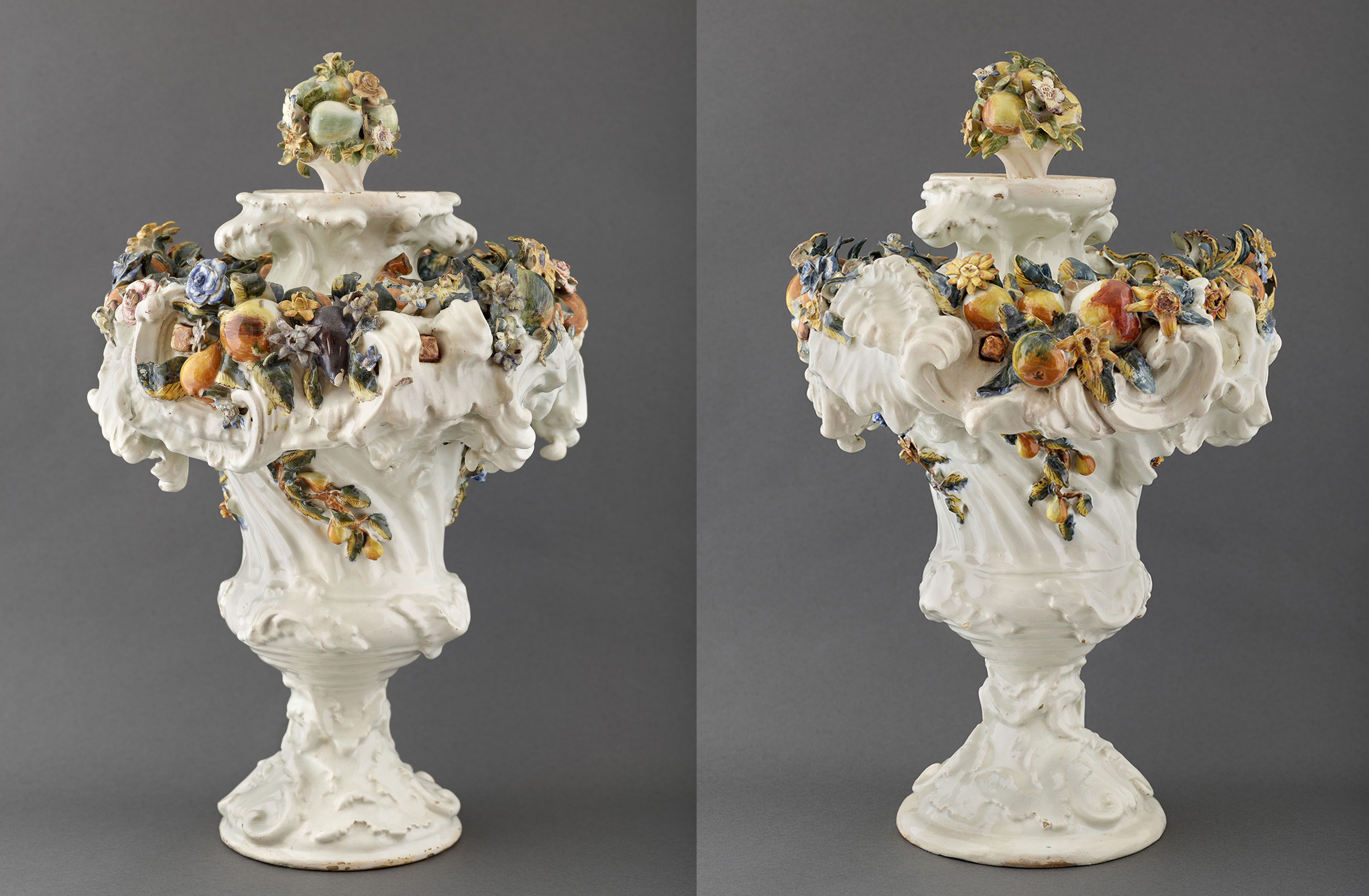
Manufactura de Alcora
Ornamental vase
1750-1761
WORK INFORMATION
Ceramic, polychrome earthenware, height 54.5 cm
The Alcora manufactory was founded in 1727 by the 9th Count of Aranda on land he owned in what is now the province of Castellón. The aim was to create a luxury earthenware and porcelain factory that would compete with foreign manufactories. Royal privileges, including tax exemption on the export of pieces and the free entry of materials from abroad, allowed this manufactory to operate until the middle of the 19th century despite the fact that it barely made any profits.
Throughout its existence, the factory became a model of organisation and a point of reference in terms of aesthetics thanks to the recruitment of foreign specialists, artists and “secretists” who claimed to know the secret of porcelain manufacture. In addition, the creation of an apprentice academy enabled the manufactory to continue to provide top quality production.
These vases belong to the establishment’s second period (1749-1786), which began when Pedro Pablo, son of the 9th Count of Aranda, inherited the factory. The 10th Count was the Spanish ambassador in Paris and was in contact with the Encyclopaedists. His curiosity led him to search for the formula for porcelain, but he only managed to obtain a material that was similar to French soft paste and English pipe clay.
The complexities of the factory became a source of unrest, leading to resignations and the creation of other workshops that tried, without much success, to imitate Alcora ceramics. For this reason, the Alcora factory requested an order from the King allowing it to identify its products with an “A”. In 1789, the “fabriquetas” [“pottery shacks”] – as they were derisively called – were closed down by royal decree.
In addition to producing porcelain, one of the aims of the 10th Count of Aranda was to manufacture small-sized sculptures. To this end, in 1745 he hired a new sculptor, Julián López (1711-1792), who became the main master, draughtsman, carver and modeller until 1779. López not only succeeded in improving the quality of sculptural production, but also increased and broadened the repertoire of sculpted items. In fact, the 1749 advertisement for objects from the factory mentions the new models designed for tabletops and shelves in private rooms.
The pair of ornamental vases, of great visual exuberance, reflect the rococo spirit of the time. Shaped like goblets, they have a helicoid, fluted receptacle crowned with rocailles, polychrome flowers and fruit in relief, and a foot decorated with rocailles and plant motifs in relief. The top end is finished in the form of a container filled with fruits projecting from the surface. The manufacture of these pieces required great technical expertise and their style was adapted to the fashions of the time: years before, the Meissen porcelain manufactory had expanded its catalogue to include clock cases and candelabra surrounded by porcelain flowers, which were quickly copied at the Sèvres factory. Alcora’s productions, as these ornamental vases show, were much more colourfully attractive thanks to the profusion of flowers and fruits they displayed.

